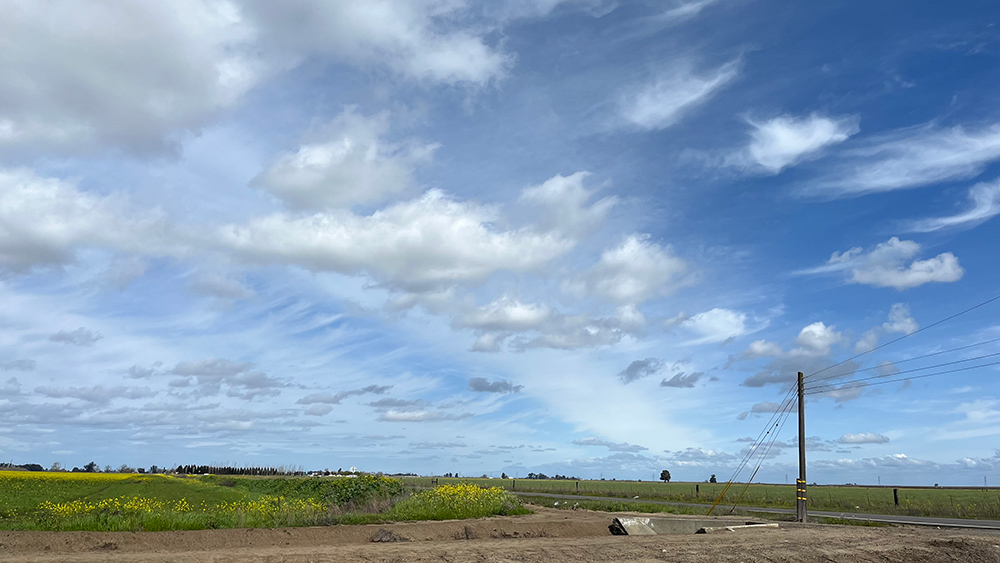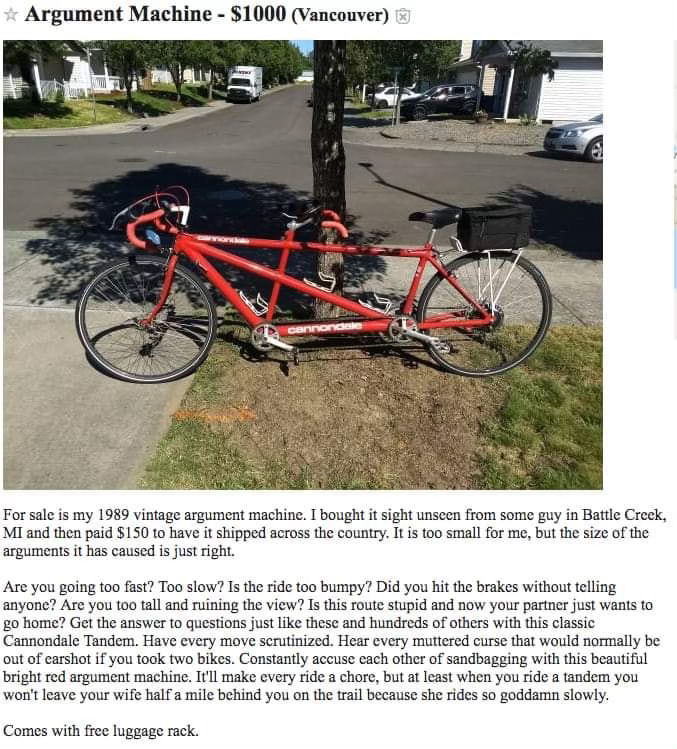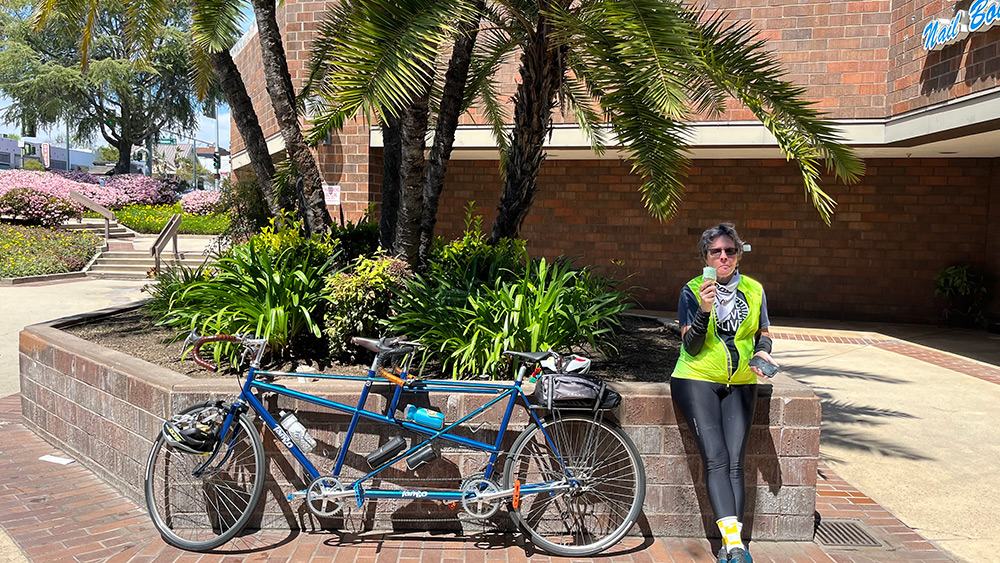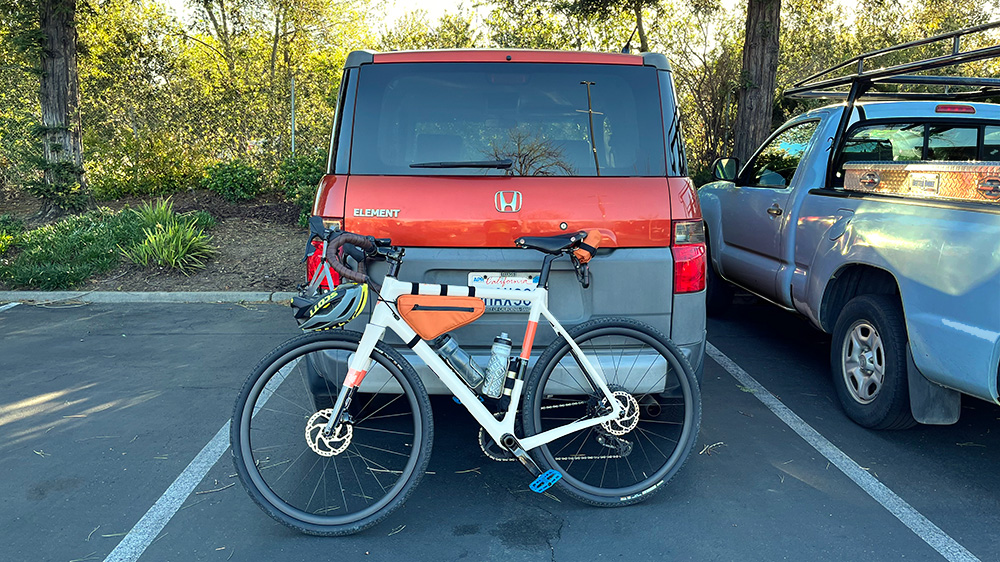
While Kathy was out trying to kill herself on a mountain bike trail, I was out trying to kill myself on my second 90-mile ride in a week. Unlike hers, mine was an organized ride, the Montezuma Hills 150k. The ride was on mixed terrain, with about 25 or so miles on gravel. The kind of gravel road Kathy thought she’d be riding. The danger for me wasn’t the distance, the gravel roads, nor even the car traffic in towns, but from riding like hell to keep up with the fast bikes. It was tough.
I ended up hanging in a group of five, mostly near the back where the riding is easier thanks to the draft. We didn’t stop other than one side-of-the-road pee break, for stop signs (sometimes), and traffic signals (non-existent along most of the route). Our first real break was at Mile 40. Deb Banks, the RBA (Regional Brevet Administrator) who organized the ride, was on the side of the road by Shirley’s Tavern. She had some drinks and snacks in the back of her SUV. No one sat. We were there maybe five minutes before one rider got back on his bike and the rest of us scrambled to catch up to him. Lunch was around Mile 55 in the town of Rio Vista. We probably spent thirty minutes there only because the service in the bakery we stopped at was slow. The only stop on our return leg was around Mile 80 when one of the riders got a flat tire. The ride took a total of 6:19; of that, our total stopped time was 51 minutes.
By contrast, I’ve spent 50 minutes and more at a single rest stop on much shorter AIDS/LifeCycle (ALC) training rides.
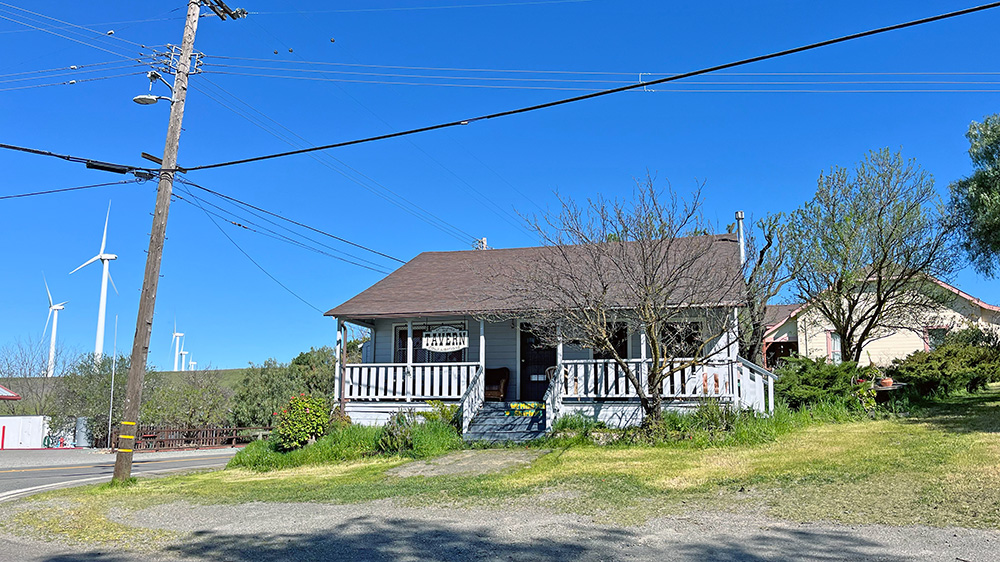
The ride I was on was a randonnee. Randonnees are organized rides, but unlike the more common organized rides like centuries (100 miles), metric centuries (67 miles), and double centuries (200 miles), randonnees usually attract a smaller, more hard-core ultra-distance crowd. Not everyone rides like my little group did that day. In fact, “randonnee” is meant to signify a long, leisurely ride in the country. There is a time limit, but it is generous. We had ten hours, for instance, to complete our 90-mile ride. But still. Sometimes it’s fun to speed through these “shorter” randonnees.
Sitting in a brew pub after the ride, swapping stories with other randonneurs, I realized at some point that these were my people. Which is to say, these are the types of riders and rides I was brought up on. By “riding” I mean serious riding. I’ve ridden bikes all my life, but I didn’t start “serious” riding—good, well-fitted bike, kitted out in wool and lycra—until 2006. And as it happened the local bike club I rode with was the Davis Bike Club, which has always had randonneuring as part of its DNA.
Which is not to say I’m a dyed-in-the-wool randonneur. I just re-upped my membership in Randonneurs USA (RUSA), which had lapsed in 2010. But now that I’m trying to get back in distance-riding shape for ALC, I find that these are the folks and this is the discipline I am most comfortable with.
So while I was sitting with these other riders in the pub, it struck me that yet another difference between Kathy and me are the riding cultures that have nurtured us. The randonnee culture is all about self-sufficiency. Camaraderie and mutual help, sure. But all riders are expected to have the skills and ability to take care of themselves. ALC, on the other hand, is all about inclusion and support, all about welcoming and helping anyone who is interested in completing the ride to whatever extent necessary. So whereas Kathy’s experience waiting in lines on the ALC ride includes deep, impromptu conversations, I didn’t even learn the names of the people I was riding with until lunch, and likely then only because we were there so long.
Another difference is that for many randonneurs, these long rides are a way of life. They talk constantly about upcoming events, which range from 100k (65-mile) “populaires” through 1200k (750-mile) “grand randonnees.” They are generally tuned up to ride year ’round. One common practice, for instance, is to complete at least one “permanent”—a 200k (125-mile) self-supported ride—every month. ALC training rides, on the other hand, are geared toward getting riders, many of them new to cycling, ready to complete one grueling event: the 545-mile, 7-day ride from San Francsico to Los Angeles. Many of the riders continue to cycle after the event: cycling is, after all, is a very addictive activity. But the ALC training regimen is based on a completely different mindset from randonneuring.
Neither is better than the other. Each is appropriate to the group that shaped it and forms its constituency. Each has its traditions, its heroes, its stories, its adherents. They’re just different. And while I was reared in one, Kathy was brought up in the other. Part of the communication she and I will be working on over the next couple of months will be reconciling our different upbringings along with their different values, ideologies, and methodologies in a way that benefits us both individually and as a team.
